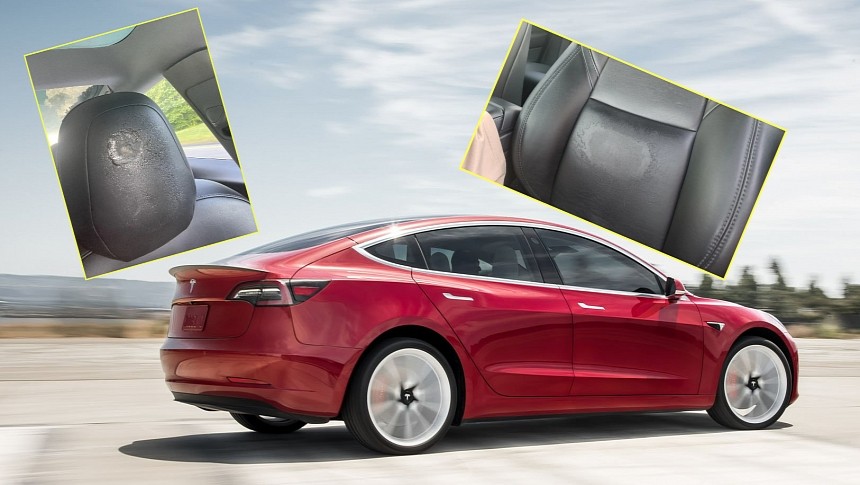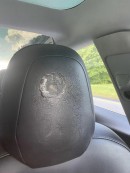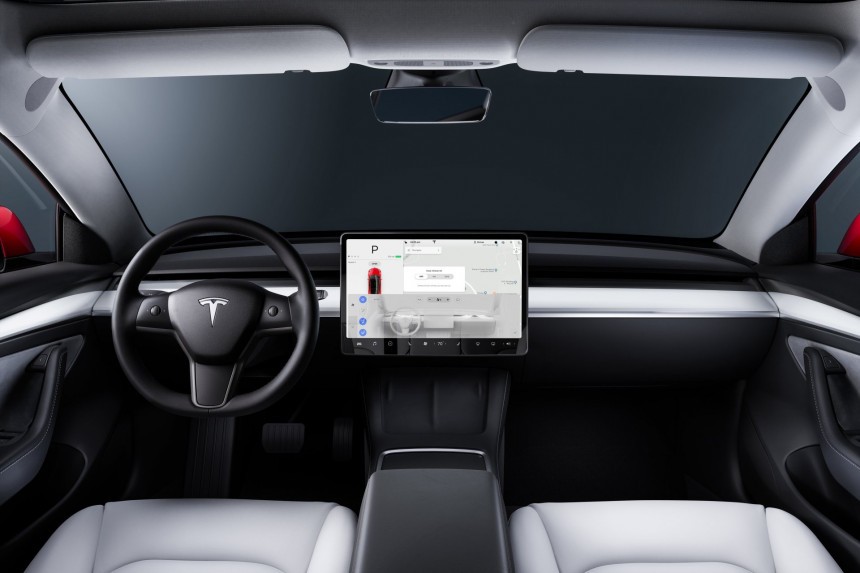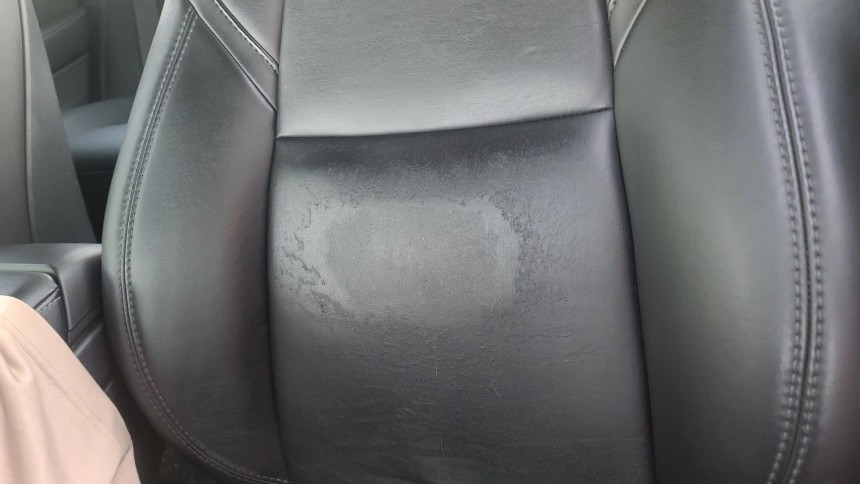If you plan on buying a Tesla soon, make sure you are informed about vegan leather and its durability. One owner recently discovered that their car's upholstery started to disintegrate slowly. Here's why this might have happened and how you can avoid it.
Tesla is in its fair share of troubled waters right now. Inventory is increasing, and discounts are not working as intended. Meanwhile, Chinese-made units are brought to North America and Europe. That's poised to amplify the problem of cars sitting in a parking lot or on a ship. Moreover, the Cybertruck is divisive, and nobody has got their hands on a production model yet. The upcoming Model 3 successor might be launched into a confused and slowing car market, Full-Self Driving Beta keeps improving but is nowhere near the level of the software found on Cruise or Waymo robotaxis, and the company's CEO has his hands full with Twitter and political debates.
Investors are not very worried yet, but they might soon realize that a temporary downtrend might be inevitable.
But what matters to us more is you – our reader, the consumer. We found something that may interest you if buying a Tesla is something you would like to do soon. Around eight years ago, the EV maker explored faux leather, popularly known as vegan leather. It was the brand's way of making its cars even more environmentally friendly. Besides not burning fossil fuels to move people around, the units were about to become even "greener."
Not only did this have the potential to eliminate cruelty, but it also helped with efficiency because the upholstery was overall lighter.
Animal skin use was no longer mandatory in every Tesla at the end of 2016. Customers received the choice of going on the vegan route. Just three years later, the synthetic leather became the only option. Most recently, the company updated the vegan leather, claiming it is buttery soft, scratch-, stain-, and water-resistant.
Other owners rushed to ask the unlucky person about what they had done wrong to cause this, while some advised them to initiate a warranty claim. Sadly, the general warranty no longer applies to this particular vehicle due to its high mileage. They reached the 67,000-mile mark. Even though forum members suggested the owner might have done something to cause this damage, they told the other Tesla buyers or enthusiasts that the seats had never been cleaned with specific substances.
A couple of days ago, another Tesla owner said on Reddit that their Model 3, with around 85,000 mi on the odometer, started to show signs of accelerated aging. The driver's seat and door handle looked like they were burned with a lighter. Once again, the community members blamed the owner first. They suggested that "corrosive" sweat might be the cause.
But before looking at salty sweat, hair products, or hand cream, prospective customers and current owners should know that the vegan leather issues were first reported online in 2020. In late 2021, more disgruntled owners shared their disappointment about the cruelty-free cabin. Some claimed the seats started bubbling out of nowhere. A couple of owners were able to fix their issues through the warranty, while many had to deal with the problem by themselves.
It's worth noting that faux leather is made by using a base material, which is then treated with coating and laminations that, in the end, lead to a leather-like appearance. Vegan leather can be produced in a wider range of colors and finishes compared to traditional leather, providing more design versatility.
Sadly, some synthetic leather may still require petroleum-based products and chemicals, which can have a negative environmental impact. Overall, however, it's generally accepted that it's better to go on the vegan leather route than to pick vehicles with seats covered in treated cow skin.
All in all, if you want to own a Tesla Model 3 or Model Y soon, you may want to explore the Banbu Leather aftermarket option offered by the von Holzhausen and Unplugged Performance companies. It costs around $30,000, but it guarantees a high level of quality and possibly better resale value. Otherwise, it would help if you protect your vehicle's upholstery by ensuring sweat, body oils, and other substances don't reach the surfaces with frequent contact. Or, better yet, just get a Model S or a Model X. They are pricier and considered by many to be built better.
Investors are not very worried yet, but they might soon realize that a temporary downtrend might be inevitable.
But what matters to us more is you – our reader, the consumer. We found something that may interest you if buying a Tesla is something you would like to do soon. Around eight years ago, the EV maker explored faux leather, popularly known as vegan leather. It was the brand's way of making its cars even more environmentally friendly. Besides not burning fossil fuels to move people around, the units were about to become even "greener."
Not only did this have the potential to eliminate cruelty, but it also helped with efficiency because the upholstery was overall lighter.
Don't ignore the early signs
But one unlucky owner discovered that their vegan interior was slowly disintegrating. They showed how the animal-free upholstery is fading away on the bottom part of the backrest. The pictures uploaded on a dedicated forum show the material is slowly losing its uppermost layers through a weird process that seems to just... melt the seat cover material. Besides that, the owner also says it leaves "horrible stains" even on t-shirts.Other owners rushed to ask the unlucky person about what they had done wrong to cause this, while some advised them to initiate a warranty claim. Sadly, the general warranty no longer applies to this particular vehicle due to its high mileage. They reached the 67,000-mile mark. Even though forum members suggested the owner might have done something to cause this damage, they told the other Tesla buyers or enthusiasts that the seats had never been cleaned with specific substances.
A couple of days ago, another Tesla owner said on Reddit that their Model 3, with around 85,000 mi on the odometer, started to show signs of accelerated aging. The driver's seat and door handle looked like they were burned with a lighter. Once again, the community members blamed the owner first. They suggested that "corrosive" sweat might be the cause.
It's not that simple
Furthermore, when models with the yoke steering wheel reached customers, and they used them for at least a couple of months, the part started to peel off. It's certainly something to worry about, especially as this cannot be fixed through an over-the-air software update.It's worth noting that faux leather is made by using a base material, which is then treated with coating and laminations that, in the end, lead to a leather-like appearance. Vegan leather can be produced in a wider range of colors and finishes compared to traditional leather, providing more design versatility.
Sadly, some synthetic leather may still require petroleum-based products and chemicals, which can have a negative environmental impact. Overall, however, it's generally accepted that it's better to go on the vegan leather route than to pick vehicles with seats covered in treated cow skin.
All in all, if you want to own a Tesla Model 3 or Model Y soon, you may want to explore the Banbu Leather aftermarket option offered by the von Holzhausen and Unplugged Performance companies. It costs around $30,000, but it guarantees a high level of quality and possibly better resale value. Otherwise, it would help if you protect your vehicle's upholstery by ensuring sweat, body oils, and other substances don't reach the surfaces with frequent contact. Or, better yet, just get a Model S or a Model X. They are pricier and considered by many to be built better.











